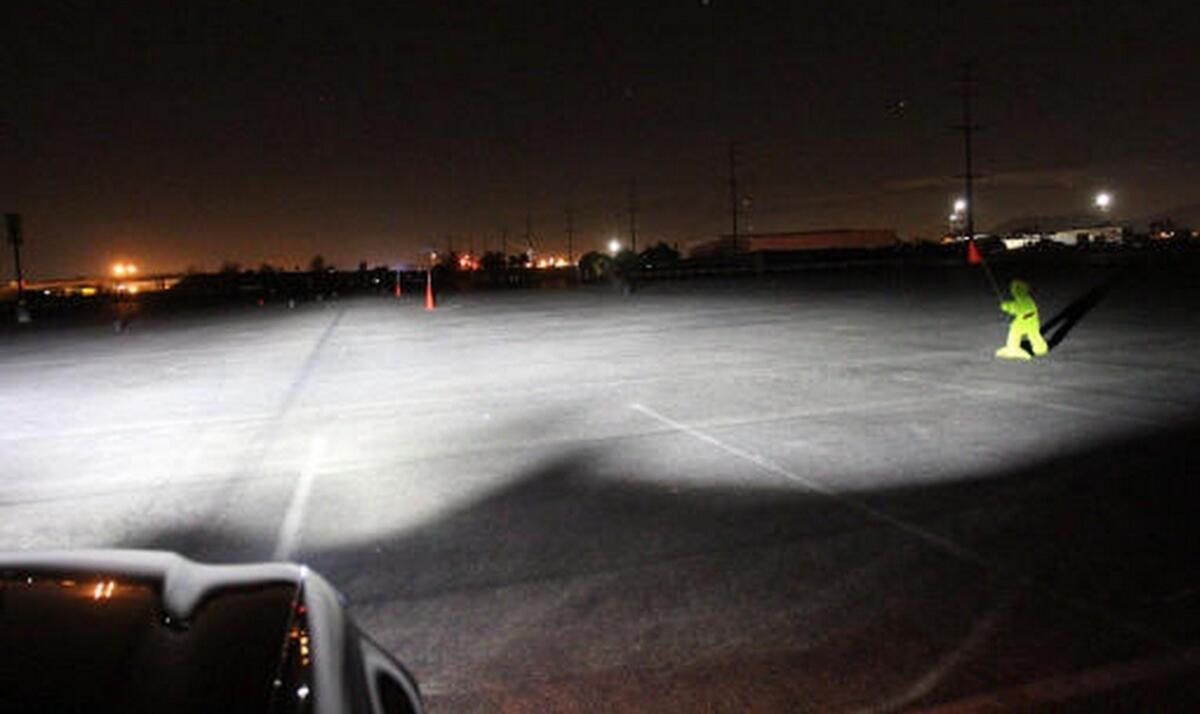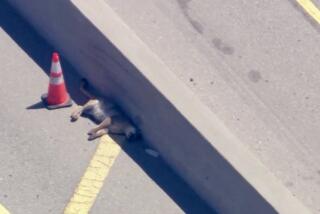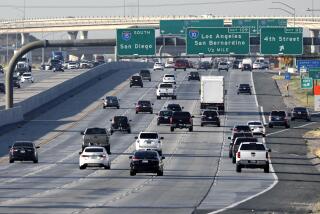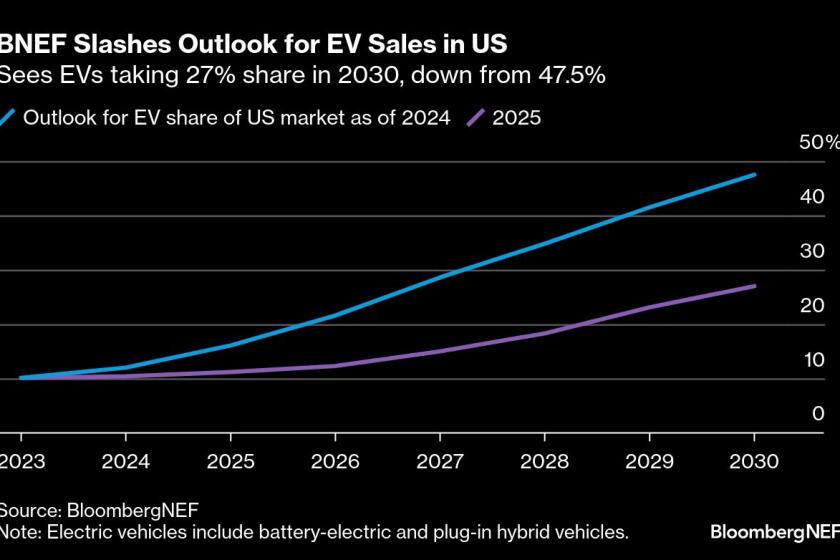Most car headlights fail safety test on dark roads, Auto Club says

The Auto Club of Southern California tests headlights of a Mercedes-Benz at the Auto Club Speedway in Fontana.
- Share via
Headlights on most cars do a poor job of illuminating especially dark roads, according to testing by Automobile Club of Southern California’s Automotive Research Center.
Halogen headlights, which the auto club says are on 80% of the vehicles on the road today, fail to safely illuminate unlit roadways at speeds as low as 40 mph. While such roads are typically rural, they account for 40% of all vehicle miles traveled annually, the auto club said.
And they exist, as well, in the urban expanse that makes up Southern California, including in the Antelope Valley, Santa Clarita Valley and San Gabriel Valley in the foothills of Arcadia, Pasadena, Sierra Madre and Azusa, said Megan McKernan, manager of the research center.
Other areas where halogen headlights aren’t up to the task include Orange County canyons such as Silverado, Modjeska and Laguna Canyon Road. Rural roadways located in Chino Hills and in Riverside and San Bernardino also are places where drivers would be at risk.
The auto club’s testing measured the distances at which modern headlights illuminate non-reflective objects on both low-beam and high-beam settings. McKernan said the results were paired with guidelines issued by the American Association of State Highway and Transportation Officials.
Most automotive headlights “fail to light the full distance necessary for a driver to detect an object or obstacle in the roadway, react and come to a complete stop,” the research center found.
The research center compared the performance of three types of headlights: halogen, high intensity discharge and light-emitting diode. Halogen performed the worst.
“AAA’s test results reveal that headlights found in U.S. vehicles fall short on safety,” McKernan said. “By failing to properly light roadways at moderate speeds, a pedestrian or animal may not become visible to a driver until it’s too late to stop.”
High-beam settings on halogen headlights improved sight distances by 28% at the testing facility but in real-world conditions only provide enough light to safely stop at speeds of up to 48 mph, well below what people travel on many rural roads.
HID and LED headlights illuminated dark roadways 25% further than halogen, but still failed to do an adequate job at highway speeds.
“While it’s encouraging to see the safety benefit that newer headlight technology offers to drivers, there’s still room for improvement,” said John Nielsen, AAA’s managing director of automotive engineering and repair.
He said better technology is available in European vehicles, but U.S. regulations limit the light output for vehicles sold in the United States.
The auto club will ask U.S. policymakers to revise federal regulations to keep up with changing technology, he said.
Follow me on Twitter @LATimesJerry, Facebook and Google+.







